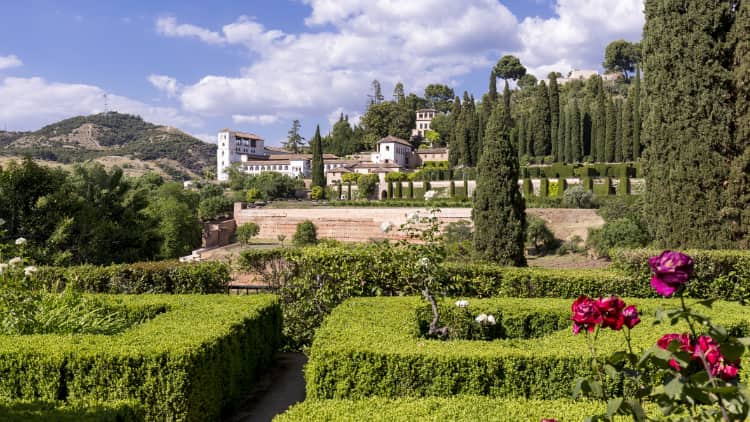Mª José Prieto
The Alhambra smells of jasmine, citrus fruits and roses. Thousands of flowers adorn the green carpet that winds through the gardens and embodies the most virtuous image of Eden. The Nasrid palace dominates the hill, majestic, exalted by the musicality of fountains and irrigation channels, at the foot of which the sultans rested to listen to the lullaby of the water. Of all the ancient gardens that survive in Europe, the Alhambra garden is undoubtedly one of the richest and most varied.
“The eye is enraptured by the exuberant beauties of the valley: the flourishing ferniness of groves and gardens and innumerable orchards, through which the Genil stretches whimsically like a silver ribbon…”, Washington Irving recounted his bewilderment at contemplating, from the Torre de Comares, the canvas of a prodigious environment.
Moorish legends
The profusely intricate vegetation inhabits the gardens that separate the splendid palatial rooms. The paths are populated by ancestral species, many of which were introduced in the Moorish period and survive in harmony with more recent species cultivated in later renovations.
Alongside these species, the flowers of Christian periods are entangled: roses, carnations, violets, oleanders and water lilies make up a generous and lively Eden. And alongside them, aromatic plants par excellence: basil, oregano, mint, thyme and lavender still persist from the times when the Hispano-Islamic gardens were used as a vegetable garden to enrich dishes.
The water of paradise
One of the most symbolic species in the Alhambra gardens is the myrtle, whose name comes from Arabic and means ‘the aromatic’. The shrub is the quintessence of the palace bastion. It is considered in the Islamic world to be a plant with baraka – a hidden and invisible blessing – it is fast-growing and is displayed embroidered with delicate white flowers that give off a very fine fragrance.
Daydreaming
After the Christian conquest of Granada, the Catholic Monarchs built the Franciscan convent on the site of a former Nasrid palace from the 13th century, where the Parador is located within the Alhambra. The building is a dream place that conquers by the incredible sensations that the magic of the environment gives off.
The comfort of the rooms is combined with the possibility of enjoying an idyllic setting, surrounded by the song of the fountains, the intoxicating aromas and the traces that an extraordinary history has left on impossible canvases.
In the dining room and on the terrace of its restaurant, with unique views of the Generalife gardens, you can enjoy traditional dishes such as “remojón” or “piononos de Santa Fe” and dishes from Nasrid cuisine such as “Breua”.
